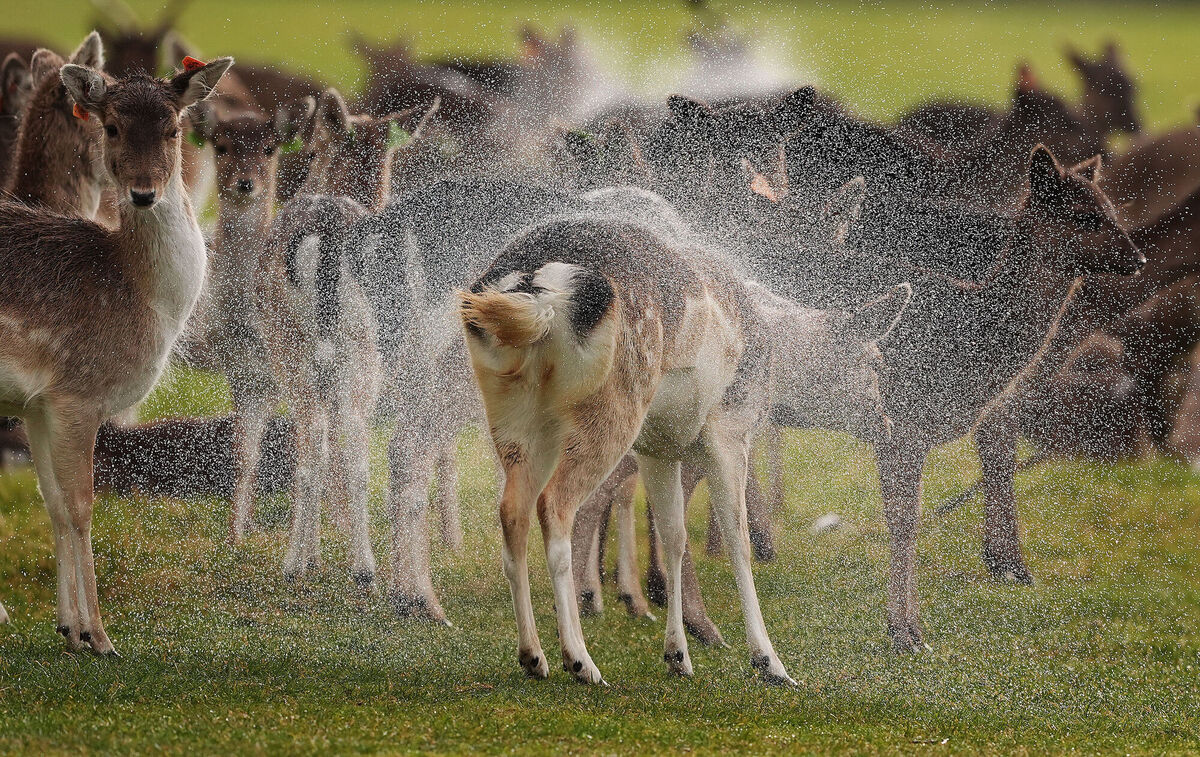Donal Hickey: Glorious weather — but will we be hit by the Scairbhín?

A spring day at Toe Head in West Cork. Picture: Andrew Harris.
If the weather is reasonably fair during Easter, many people will be out walking, enjoying verdant spring growth and birdsong. But, if you feel a chill in the bracing air, don’t be surprised.
We’re all accustomed to ever more unpredictable weather patterns: just look at the contrast between March just past and March of last year. People into old weather lore, however, are not surprised if the elements are cold and wet around now.
We’re just into the Scaraveen (rough weather of the cuckoo — scairbhín) period, after all. A number of readers have been in touch asking when it begins and ends. The Scairbhín is roughly the last two weeks in April and the first two weeks in May, during which we sometimes experience the last blast of winter before summer eventually arrives.
The latest report of the Climate Advisory Council makes no mention of this, of course, and is far more exercised about the recent Storm Eowyn’s exposure of how our national infrastructure, energy, and transport services are so ill-prepared for dealing with such weather extremes.
Anyone who grew up in mid-20th century Ireland will know that often lengthy periods of snow and hard frost were virtually guaranteed each winter. That’s no longer the case, with our winters now warmer and wetter.

A few weeks ago, a dairy farmer friend bemoaned slow grass growth, due to a prolonged dry spell. A sheep farmer, glancing at bare fields, feared there would be ‘no pick’ of new grass for his young lambs which usually have their first green nibble a week, or so, after birth.
March 2025 was the driest on record in some places and we had above average sunshine, with temperatures hitting 19°C in Mount Dillon, County Roscommon.
All of which was in sharp contrast to March 2024, the wettest on record in some places, when land was so sodden that cattle on some farms had to be kept indoors. It was the wettest since 1963 at the Valentia Observatory, in County Kerry, while airports in Cork and Dublin each recorded eight ‘very wet’ days, to give a few examples.
I grew up listening to amateur farmer weather forecasters, who depended largely on signs from nature. They were convinced about a wintry Scaraveen period which may happen, though not always. It’s hard to disagree with professional meteorologists who believe weather patterns are largely random and unpredictable.
Finally, if you come across sheep flocks during Easter, pause awhile to watch frolicsome lambs at play. Delightful.
The poetry of Christina Rossetti captures the scene:
“Woolly Sisters, woolly brothers,
Jumping off their feet
While their woolly mothers
Watch by them and bleat."
Check out the Irish Examiner's WEATHER CENTRE for regularly updated short and long range forecasts wherever you are.








